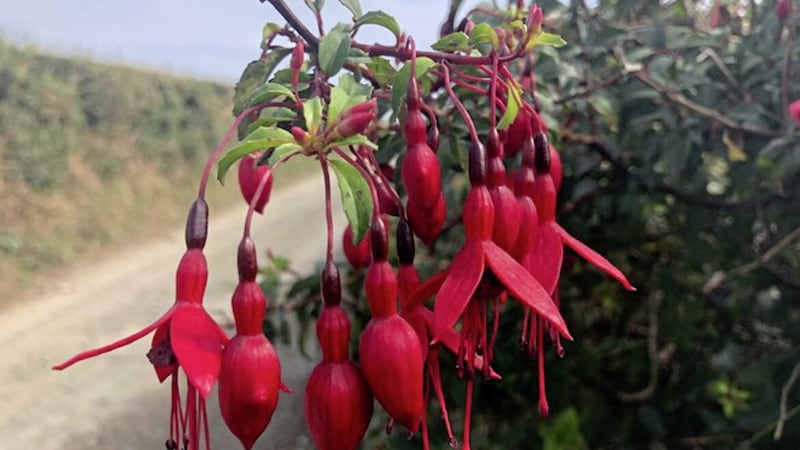The fuchsia is familiar to us all – whether in a hedgerow or a hanging basket...
OVER recent decades there's been a growing awareness of the threat posed to Ireland's biodiversity by non-native plants and animals. Grey squirrels, sika deer and coypu are among the animals escaped or released into the wild whose populations have got out of control in pockets across the island, while in the plant kingdom Rhododendron ponticum, Gunnera tinctoria (giant rhubarb) and the aquatic floating pennywort are the main offenders, spreading quickly and quite literally putting native flora in the shade.
In the hierarchy of alien species, Fuchsia magellanica is generally regarded as more benign. This is arguably for a number of reasons, ranging from its non-threatening appearance to the fact that while it thrives in Ireland's moderate climate, it isn't 'invasive' in the strictest sense when compared to the likes Himalayan Balsam and Japanese Knotweed or any of those plants listed above. Fuchsia magellanica originally hailed from South America and is the hardy, woody variety found in hedgerows and cottage gardens. Its attraction lies in the fact that it is unfussy and can work both as an ornamental and as a more functional hedging shrub.
Named after the 16th century German botanist Leonhart Fuchs, fuchsias are treasured for their profusion of distinctive ballerina-like pendant flowers – the stamens and pistils hanging below a skirt of petals and sepals. As a child, and occasionally still, I'd pull the stamen from the flower and taste the sweetness of the nectar normally only the bees can reach. The flowers' popularity with bees and other pollinators is latterly perhaps another reason it is welcomed, rather than spurned, in Ireland. Arriving from early July onwards, the purple and red flowers flowers of Fuchsia magellanica will last through to October, followed by rather underwhelming inedible fruit.
Fuchsia magellanica thrives in fertile and not so fertile, moist but well-drained soil, in full sun or partial shade. The textbook will tell you it likes a sheltered spot, yet many of the fuchsia I'm familiar with thrive where they are often battered by salty, horizontal winds. They can grow up to 2.5m and may become leggy over time. However, they will withstand a hard spring prune, that will reinvigorate the plant as well as improving its shape.
There's been an explosion in the number of hardy fuchsia cultivars recently, all offering different takes on those distinctive hanging flowers. 'Hawkshead' is among the more creative, which rather than the usual scarlet and purple combination, boasts tubular flowers that are a ghostly greeny-white. Slightly more conventional yet just as eye-catching is 'Lady Bacon', a compact shrub whose flowers feature white sepals, light blue petals and long pinky stamens. ‘Champagne Celebration’ bears light pink petals with pink-white sepals with pointed tips.
Fuchsias are also a popular choice for summer bedding schemes in containers and hanging baskets. Many of these need be overwintered under indoors if they are to survive through to the following year. Most people tend to bin them and buy new ones the following year. I must confess that while I'm fond of Fuchsia magellanica and other hardy cultivars, the tender varieties aren't really my thing. If you must, check out non-hardy varieties like ‘Rapunzel’, a trailing fuchsia with white and purple flowers, best suited to hanging baskets and window boxes, or for pots try ‘Dollar Princess’, which has small double flowers that look great against its deep green foliage.








